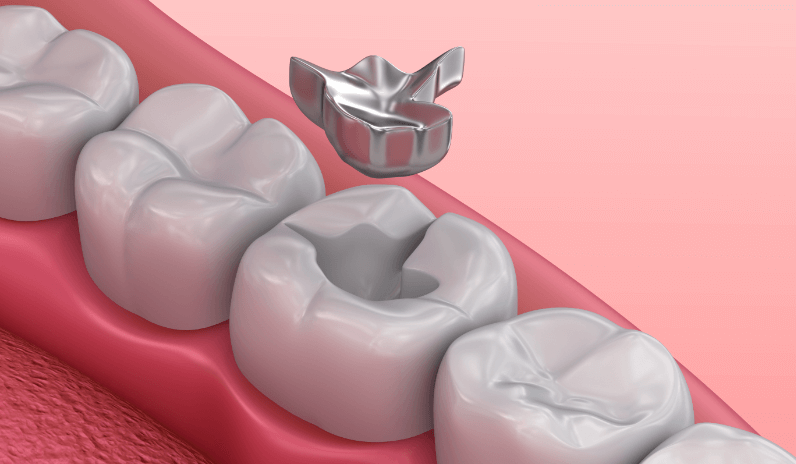When it comes to dental restorations, patients often wonder if white fillings are better than traditional silver fillings. Many consider filling removal(حشوة ملغمية) to replace old silver (amalgam) fillings with tooth-colored alternatives for aesthetic reasons. However, the decision between white and silver fillings involves more than just appearance. Understanding the benefits, drawbacks, and appropriate uses of each can help you make the best choice for your oral health.
What Are White Fillings?:
White fillings, also known as composite resin fillings, are made from a mixture of plastic and fine glass particles. They are designed to match the natural color of teeth, making them a popular cosmetic option.
Features of White Fillings:
- Tooth-colored and blend seamlessly
- Bond directly to the tooth structure
- Require less removal of healthy tooth material
- Suitable for small to medium-sized cavities
What Are Silver Fillings?:
Silver fillings, or dental amalgam, consist of a mixture of metals including mercury, silver, tin, and copper. They have been used for over 150 years due to their strength and durability.
Features of Silver Fillings:
- Strong and long-lasting
- Cost-effective compared to alternatives
- Resist wear from chewing forces
- Typically used for back teeth (molars)
Comparing Durability and Longevity:
When deciding between white and silver fillings, durability is a critical factor.
Silver Fillings:
- Known to last 10 to 15 years or longer
- Highly resistant to chewing forces, especially in molars
- Less prone to chipping or breaking
White Fillings:
- Typically last 5 to 10 years depending on location and size
- More prone to wear and discoloration over time
- Better suited for front teeth or smaller restorations
Aesthetic Considerations:
One of the main reasons patients opt for white fillings is their natural look.
Advantages of White Fillings:
- Blend with surrounding teeth for a seamless smile
- Ideal for visible teeth, enhancing confidence
- Can be repaired or replaced more easily for cosmetic reasons
Limitations of Silver Fillings:
- Noticeable metallic color, especially when smiling or talking
- Some patients dislike the appearance and seek filling removal for cosmetic upgrades
Safety and Health Concerns:
Both filling types have been studied extensively for safety.
Silver Fillings:
- Contain mercury, which has raised health concerns
- Scientific consensus indicates that mercury in dental amalgam is stable and safe for most people
- Safe removal procedures are important if filling removal is performed to prevent exposure
White Fillings:
- Mercury-free and considered biocompatible
- Some people may have allergies or sensitivities to composite materials, but these are rare
Placement and Procedure Differences:
The application techniques for each filling type affect their performance.
Silver Filling Placement:
- Requires removal of more healthy tooth to create space for the filling
- Moisture tolerance is higher during placement
- Hardens quickly and can handle chewing forces soon after
White Filling Placement:
- Bonds chemically to tooth, allowing conservative removal of decayed areas
- Requires a dry field for successful adhesion
- Layered placement to reduce shrinkage and improve strength
Cost Considerations:
Cost can influence the choice between fillings.
Silver Fillings:
- Usually less expensive upfront
- Long lifespan can mean fewer replacements and lower overall cost
White Fillings:
- Higher initial cost due to material and technique
- May require more frequent replacements, increasing long-term expense
When Is Filling Removal Recommended?:
Sometimes, filling removal(حشوة ملغمية) is necessary regardless of the filling type.
Reasons for Removal:
- Decay forming underneath the filling
- Cracks, leaks, or fractures in the restoration
- Cosmetic preferences or allergies
- Damage due to wear or trauma
Important Tips for Safe Removal:
- Professional dental care to minimize exposure to mercury vapors during amalgam removal
- Use of rubber dams and high-volume suction for safety
- Proper disposal of removed material
Making the Best Choice for Your Teeth:
Choosing between white and silver fillings depends on several factors.
Considerations to Discuss with Your Dentist:
- Location and size of the cavity
- Aesthetic priorities
- Budget constraints
- Oral hygiene habits
- Any history of allergies or sensitivities
Final Thoughts:
Both white and silver fillings have their own advantages and limitations. While white fillings offer superior aesthetics and are mercury-free, silver fillings provide unmatched durability, especially in molars and high-pressure areas. If you’re considering filling removal to replace old restorations, consult your dental professional to evaluate the best option tailored to your specific dental needs and lifestyle.

